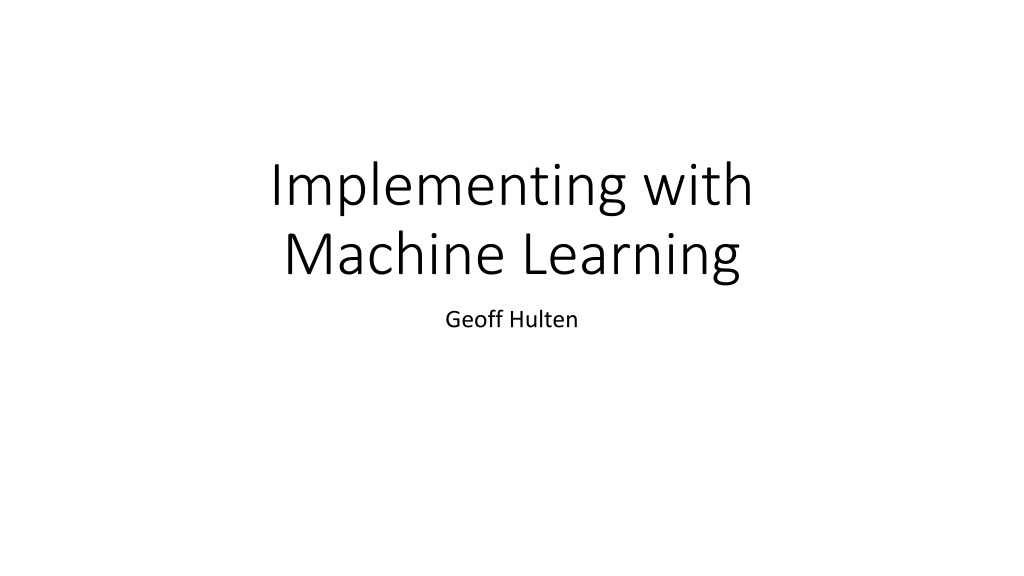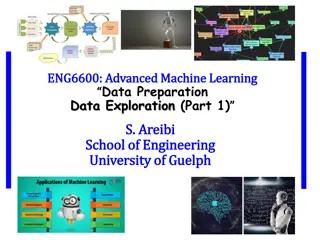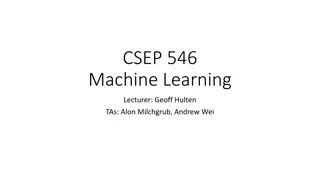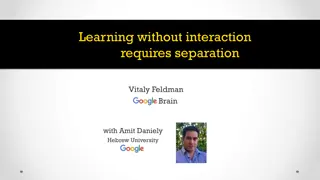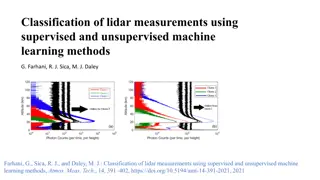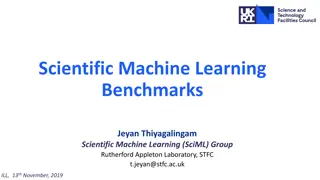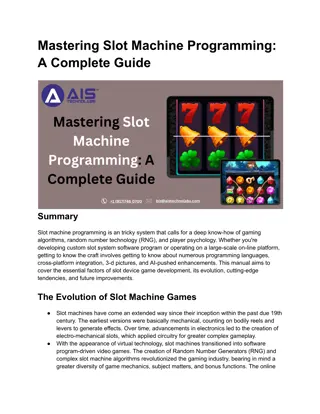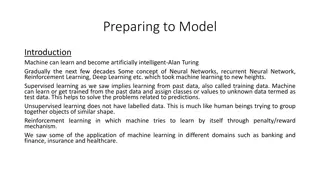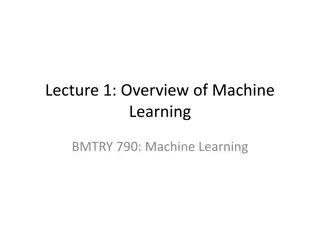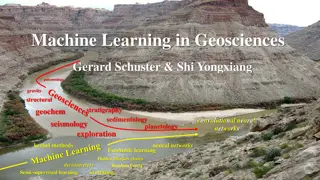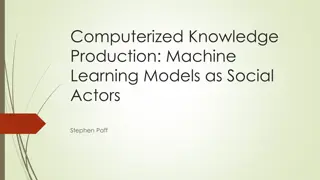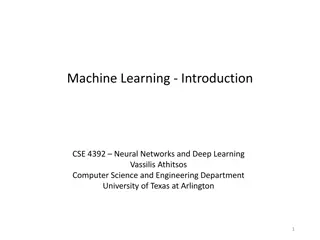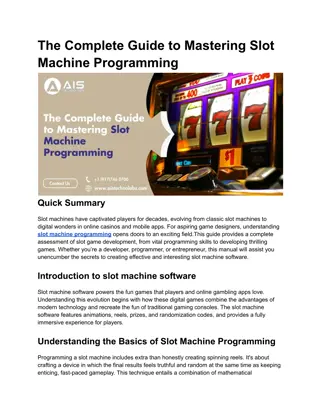Implementing Machine Learning in Applications
Machine learning implementation involves integrating intelligence creation in applications, managing intelligence, orchestrating the environment, and monitoring success. Key components include verifying new intelligence, controlling rollouts, keeping in sync, and supporting online evaluation. Adaptation, dealing with mistakes, and updating thresholds are crucial for driving the racecar of implementation. Telemetry, training data selection, and outcome verification are essential for successful implementation.
Download Presentation

Please find below an Image/Link to download the presentation.
The content on the website is provided AS IS for your information and personal use only. It may not be sold, licensed, or shared on other websites without obtaining consent from the author.If you encounter any issues during the download, it is possible that the publisher has removed the file from their server.
You are allowed to download the files provided on this website for personal or commercial use, subject to the condition that they are used lawfully. All files are the property of their respective owners.
The content on the website is provided AS IS for your information and personal use only. It may not be sold, licensed, or shared on other websites without obtaining consent from the author.
E N D
Presentation Transcript
Implementing with Machine Learning Geoff Hulten
Machine Learning in an Application File Format: <?>, <?>, <?0>, <?1>, < ??> model.load(<dataFile>) Context: [ <message text>, <metadata> ] for each interaction: context = GetRawContext(<userInput>, <programState>, ) Features: <exactly same code from training> x = Featurize(context) Inference Code: <engine to execute the model> y = model.predict( [ x ] ) User Experience: UpdateUserExperience( y[0] ) if y == 0: AddToInbox(newMessage) else: pass
Simple Implementation Intelligence Creation Environment Intelligent Runtime Integrate feature creation code Build the model Save out model (parameters) Load model (parameters) Export feature creation code Program state -> Context Inference Engine Challenges Featurize, call model Feature code implementation Explore vs Perform Update the user experience Updating model regularly Keeping things in sync Knowing when there are problems
Components of an Implementation Intelligence Management Verify new intelligence Control rollouts: Keep in sync Clients/services Support online evaluation Intelligence Runtime Intelligence Creation Environment Intelligence Orchestration Monitoring success Inspect Interactions Adapt as things change Deal with mistakes Updating thresholds Drive the racecar Program State -> Context Execute Feature Code Execute Model Interpret Model Output Control User Experience Update: Models Feature Code Telemetry -> Context Feature code in sync Computation & Data All the training stuff Telemetry Verifying outcomes Training data Selecting what to observe Sampling Summarizing
